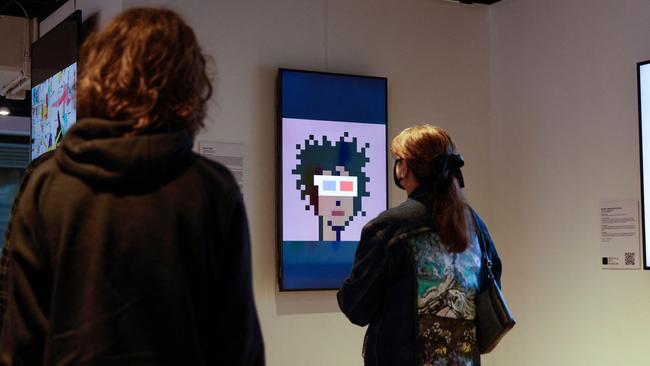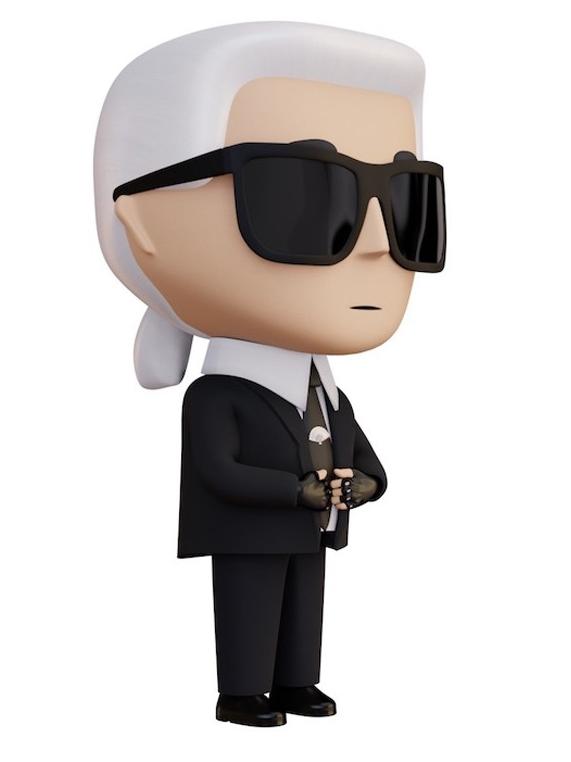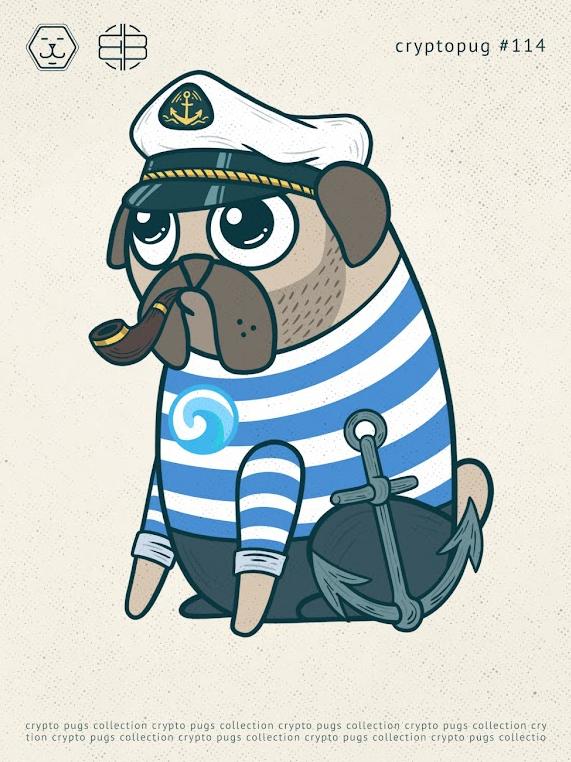NFTs are both performance art and a silly symptom of FOMO gone mad
If you’re looking for the underlying value in the multi-billion dollar NFT sector save your effort, it’s mostly smoke and mirrors.

Business
Don't miss out on the headlines from Business. Followed categories will be added to My News.
NFTs are the biggest grift going around, but that’s totally OK, because we’re all, by now at least, in on the joke aren’t we?
If you’re not across the whole NFT flim flam count yourself lucky.
The rest of us have been wandering around sporting confused frowns, wondering, “Is it me? Do I just not get it?”
Don’t worry, it’s not you, it’s them. If you can’t figure out why anyone would pay $11.75m for a CryptoPunk – a poorly executed pixelated Jpeg exhibiting less artistic skill than your average five year old – that’s because there is no good reason to.
That’s not to say that there’s not an explanation for it.
Much of the NFT phenomenon can be explained by the desire to “perform” one’s wealth publicly, a real world demonstration of the greater fool theory for the traders out there looking to make bank, and the seemingly endless capacity of the art world to revel in absurdity.
There is a darker side to it though, which is now well established, with NFTs claiming ownership over everything from prime numbers to colours emerging, and a thriving economy of NFT duplication and fraud.

The NFT phenomenon has been around for a while, but burst into the mainstream consciousness in March last year when digital artist Beeple sold an NFT of his artwork The First 5000 Days through auction house Christie’s for $US69m.
It was great news for Beeple, aka Mike Winkelmann, but the wrinkle in the purchase, and for most NFT purchases, is around what you’re actually buying.
In the digital art world, you’re essentially buying the provenance, and proof of ownership, of a piece of digital art, or, say, a digital “trading card” of a sportsperson, in that field.
What you’re not buying is the actual art itself, the copyright or right to license it in most cases, and there’s generally nothing to stop anyone from copying your “artwork”, printing it out and hanging it on their wall, or viewing it whenever they’d like to online.
NFTs have certainly been a huge boon for artists savvy enough to tap into the frenzy of FOMO which has enveloped NFTs over the past year, and more power to them.

The semantics of digital ownership aside, the economics of the art world have always been absurd, and if Reddit founder Alexis Ohanian wants to buy his wife Serena Williams a crappy CryptoPunk Jpeg for $300,000-plus that’s his prerogative.
Whether much of the “art” produced can justifiably lay claim to the title is arguable, with collections such as CryptoPunks and the also wildly popular and expensive Bored Ape Yacht Club smashing out a “limited” collection of 10,000 each.
You’d like to hope that art seeks to explore something about the human condition, but then again Maurizio Cattelan taped a banana to a wall at Art Basel in 2019 and Damien Hirst stuck a stuffed shark in a tank 30 years ago and that’s now worth millions so the definition of art can be firmly in the eye of the beholder.
But I’d argue there’s an unintended ironic element of social commentary element to the NFT craze which elevates it to the status of performance art.
We’ve proved, once again, that people will really buy anything, as long as you build enough hype around it, and there’s a Warholian quality to taking the mundane and selling it to self-styled sophisticates for millions. Campbell’s Soup anyone?

All of the noise around the ridiculous prices being paid by the Biebers of the world for NFTs is pretty harmless. NFTs, along with Birkin bags and Hermes scarves sell for multiples approaching the ridiculous more than their intrinsic value and that’s just fine. Rich people problems.
But the number of NFTs which are sprouting up offering NFTs for everything from colours to prime numbers is problematic, and emblematic of an entirely unregulated industry being exploited by savvy entrepreneurs who see a global market of investors who are terrified of missing out on the next Bitcoin.
The Color Museum has been advertising digitally in Australia, offering the chance to “own the building blocks of new art’’ by buying one of “only 10,000” color NFTs. Note: 10,000 seems to be the magic number for NFT issuance.
“Own your color for eternity – or as long as Ethereum exists,’’ the slick website says, adding that they are building a marketplace where “transaction fees are shared with color NFT owners based on the proportional use of their colors in traded NFTs’’.
Firstly, Anish Kapoor did it first with Vantablack.

Secondly, you obviously won’t own the colour, but as founder Omar Farooq told us via email “We are building an NFT marketplace where a portion of transaction fees for settled trades is distributed with Color NFT holders based on the proportional use of the color associated with their Color NFT in a given traded NFT’’.
Got it? The idea was derided as “absolutely insane” by one commentator on social media, and another suggested “wouldn’t it be better to just not do this at all and do something else instead?”
In that respect, this project does not distinguish itself from scores of others in the NFT realm.
The aforementioned prime number NFTs are clearly inherently worthless, as is the NFT of former Twitter CEO Jack Dorsey’s first tweet which went for $US2.9m.
Good use cases for NFTs are emerging, with many now tied to physical products such as Penfolds wine, with the NFT being a marketing gimmick with a halo of tech sophistication.
Neuroscientist and philosopher Sam Harris has posited the idea of minting a limited edition of NFTs and giving them out to people who take up the Giving What We Can Pledge to donate 10 per cent of pre-tax income to charity.
Those NFTs could be used to spread the word about the pledge and also potentially create a valuable secondary market to benefit those who have made the pledge, and also feed more money back to philanthropic causes.
Others are making NFTs of their farts.
With its basis in the blockchain, it’s not surprising that NFTs have exactly the same feel about them. There is a hard core of true believers who won’t hear a bad word about them, and an equally vocal tribe on the other side decrying their colossal stupidity.
Feel free to make your own judgment, but at the very least, don’t end up the greatest fool when the NFT party stops.
Originally published as NFTs are both performance art and a silly symptom of FOMO gone mad



